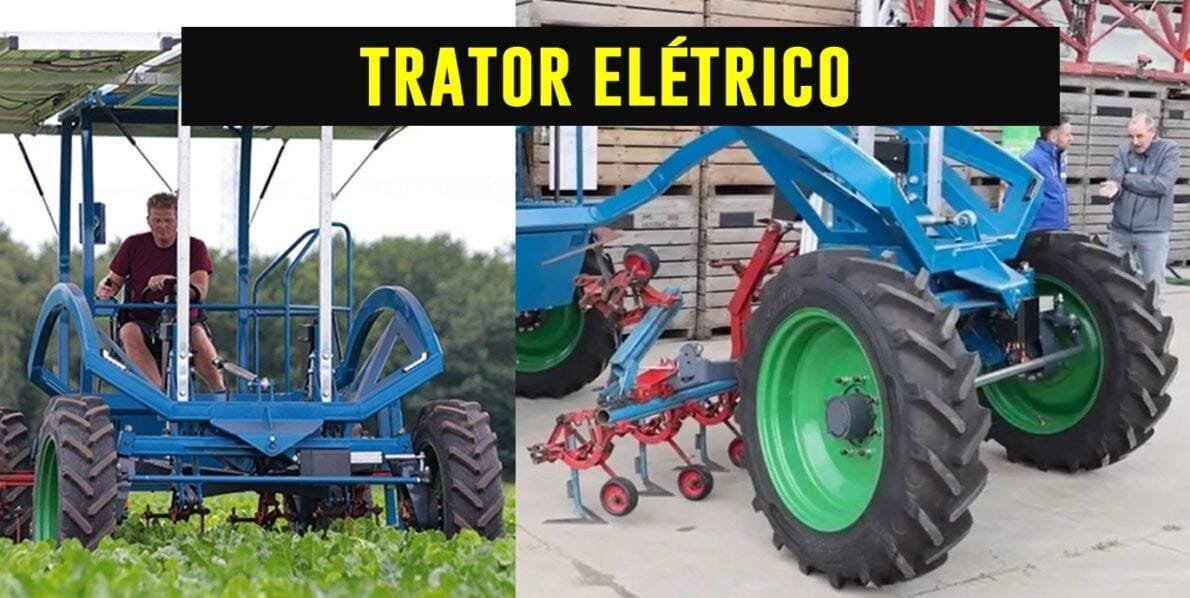When a Dutch farmer named Bastian van der Veen embarked on the creation of the E-Horse tractor, his vision bent away from convention, favoring an unexpected arrangement of technology and necessity. From its solar-paneled canopy down to its compact yet robust chassis, the E-Horse signals not merely adaptation but breakthrough—eschewing fossil fuels without diminishing agricultural productivity.
Lightweight in form yet bold in capability, the E-Horse demonstrates how electromechanical ingenuity can cultivate fresh furrows in both literal and metaphorical soil. Its roof supports eight solar modules; optionally extended to twelve, they harvest sunlight with notable efficiency even when stationary or clouded by morning mist. Energy converges into a 20 kWh battery storage system—a figure that doesn’t draw much attention until you realize it powers farming tasks continuously for 6 to 8 hours. Only several short years ago such duration would have summoned skepticism among seasoned agronomists.
Among mainstream agricultural vehicles, four-wheel steering is not always prioritized; here it flourishes as a crucial aspect of operation: fields bisected by narrow rows demand nimbleness amid obstacles forgotten by textbook designers. The joystick interface puts precise command in the grower’s hand—a choice evocative more of aviation than tillage.
Soil compaction remains an overlooked adversary for crop yield longevity. By designing this electric tractor intentionally lightweight—almost dainty compared to behemoth diesel cousins—the E-Horse grants roots easier passage beneath earth’s crusty shell. This paradoxically gentle strength benefits annuals and perennials alike.
It nonetheless would be misleading if I left you thinking agriculture only cared for efficiency or emission numbers alone. There exists an odd satisfaction for many farmers in hearing engines thrum—a sound surprisingly absent here. When the E-Horse hums quietly across pasture at sunrise, some say it feels like being present at both an ending and origin story simultaneously.
On rare occasions when cloudbanks seriously diminish available sunlight energy (and they sometimes do), concerns regarding run time emerge—not everyone becomes convinced immediately that electrified systems provide enough margin during longest workdays. Still, backup plans involving grid charging serve as safety nets rather than routine demands.
Technical literature will cheerfully label automatic GPS steering “autonomy,” but local growers remark more upon less fatigue at dusk than machine learning itself: swathed by emerging precision agriculture standards yet practically benefitting from mundane details like steady hands no longer required through rows upon rows beneath July sun. Here emerges another subtle drift: technological sophistication layered between familiarity and surprise.
Solar-powered tractors cause cost structures to wander unfamiliar territory too—initial outlays challenge smaller operators who must balance up-front investment against promises of lower maintenance expenditures over time due to fewer moving components recording wear or demanding lubrication schedules foreign to their forebears’ notebooks.
Such culture shifts don’t sweep clean overnight; traditions require gentle nudging rather than abrupt ejection from decades-old habits—even if environmental regulations suddenly prompt swift decline in diesel allocations across Europe or neighboring regions increasingly sensitive toward carbon inventories instead of just bushels harvested per acre annually.
Taking inspiration further afield (one might say into another hemisphere), African pilot projects also experiment with low-cost solar-battery hybrid tractors appropriate for tough terrain where rocky subsoil otherwise blunts progress year after year—technology crossing borders often picks up unexpected hitchhikers along new tracks laid somewhere between Lusaka markets and Gelderland farmsteads.
Curiously enough though: while Solectrac’s ventures out west tout performance enhancements such as improved pulling power thanks largely to battery heft providing increased traction under load, van der Veen opted specifically for minimized vehicle mass where Dutch peat bogs misbehave under weightier machines’ treads.
One idiom comes naggingly into play here—the notion of “teaching an old dog new tricks.” Mechanized plowing predates modern gridlines; now farmers grasp digital task management from touchscreens seated beside sunbeams captured overhead instead of soot clinging iron exhaust pipes below deck plates yellowed with years’ grime accumulation—that’s certainly unexpected company at dawn milking times.
Put differently: innovation sometimes arrives disguised less as a revolution than piecemeal adaptation carrying crooked edges brimming with potential rough spots left unpolished—trickling slowly autumn-wise before one realizes winter’s chores just became subtly more bearable because batteries waited charged beside cracked barn doors still swinging open underneath northwinds’ memory-laden passageways.
In retrospect (though perhaps this contradicts earlier optimism), whether every adopter will witness identical paybacks remains undecided—it may turn that adaptability blends better with selective application rather than broad homogenization amidst wildly divergent contexts across rural landscapes old and new alike. One thing does appear certain though—inventions like van der Veen’s solar-powered E-Horse tractor nudge open previously locked gates toward emissions-free cultivation dreams fast galloping closer onto tomorrow’s paddocks.











